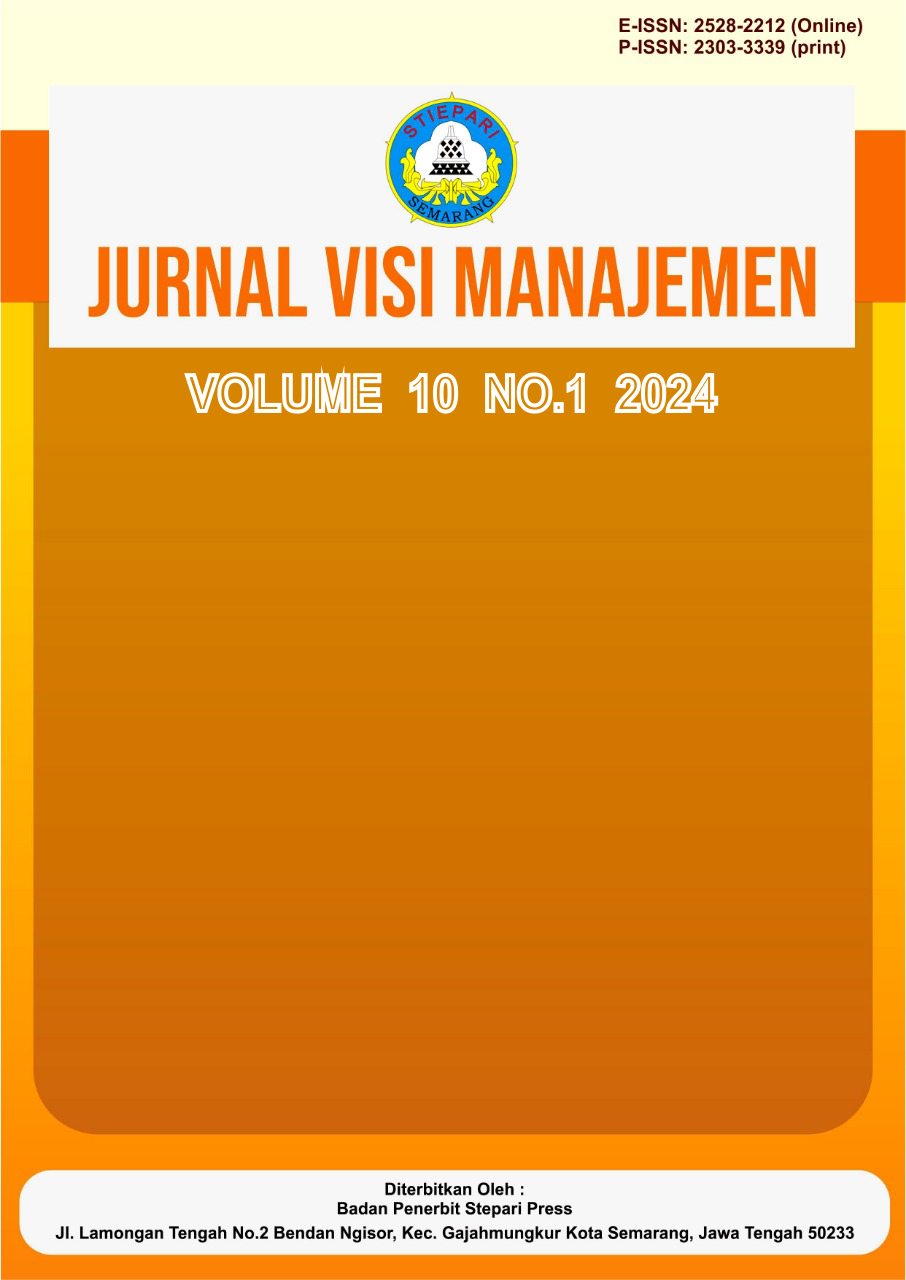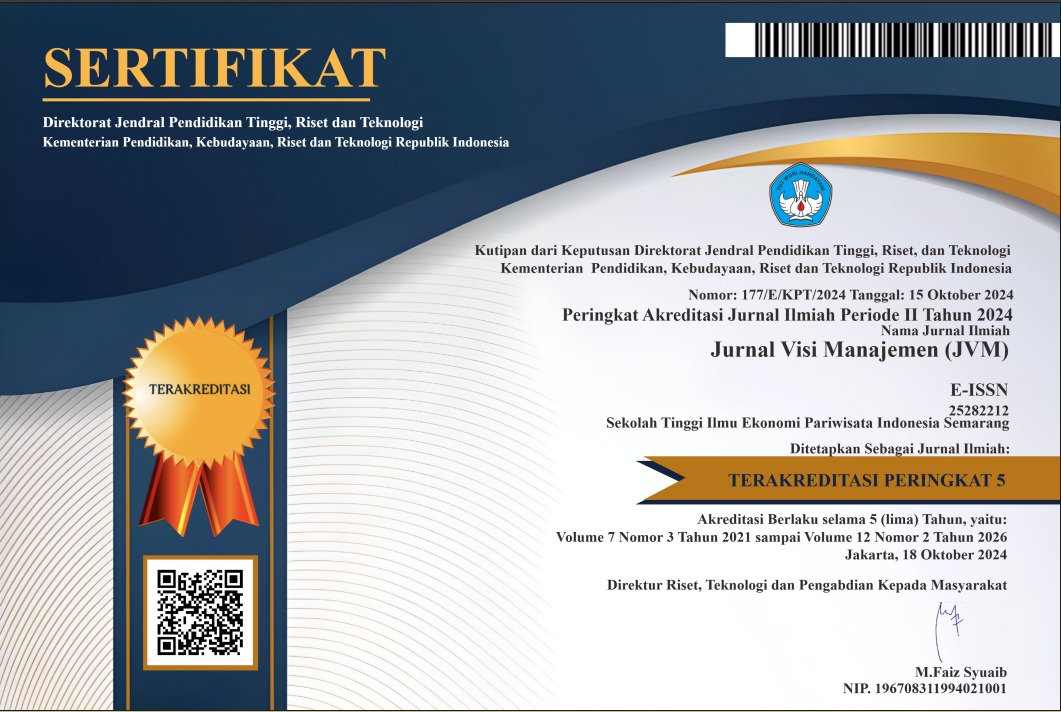Dampak Penghindaran Pajak terhadap Struktur Jatuh Tempo Utang pada UMKM
DOI:
https://doi.org/10.56910/jvm.v10i1.521Keywords:
Micro, Small, MSMEsAbstract
This study aims to review the impact of tax avoidance on the debt maturity structure of Micro, Small, and Medium Enterprises (MSMEs) based on existing literature. Tax avoidance provides MSMEs with the ability to improve short-term cash flow by reducing tax liabilities, which in turn allows for flexibility in managing debt, including extending debt maturity. With increased cash flow, MSMEs tend to rely more on debt as a financing source; however, they also face the risk of higher financing costs due to increased risk perceptions from lenders. The impact of tax avoidance on company reputation can also affect relationships with creditors, potentially leading to higher borrowing costs or difficulties in obtaining debt in the future. Although tax avoidance offers short-term benefits, MSMEs need to consider the potential long-term negative impacts, such as financial risks and reputational damage, when making debt management decisions. This study provides important insights for MSMEs in managing tax avoidance wisely, balancing financial benefits with the potential reputational impact.
References
Antoniou, A., Guney, Y., & Paudyal, K. (2006). The determinants of debt maturity structure: Evidence from France, Germany, and the UK. European Financial Management, 12(2), 161–194. https://doi.org/10.1111/j.1354-7798.2006.00315.x
Bachas, P., Fattal Jaef, R. N., & Jensen, A. (2019). Size-dependent tax enforcement and compliance: Global evidence and aggregate implications. Journal of Development Economics, 140, 203–222. https://doi.org/10.1016/j.jdeveco.2019.06.001
Badertscher, B. A., Katz, S. P., & Rego, S. O. (2013). The separation of ownership and control and corporate tax avoidance. Journal of Accounting and Economics, 56(2–3), 228–250. https://doi.org/10.1016/j.jacceco.2013.08.005
Beasley, M. S., Branson, A. W., & Smith, J. H. (2021). Tax avoidance and financial cost: Evidence from small and medium-sized enterprises. Journal of Financial Economics, 89(4), 673-690. https://doi.org/10.1016/j.jfineco.2020.11.002
Beck, T., Demirgüç-Kunt, A., & Maksimovic, V. (2008). Financing patterns around the world: Are small firms different? Journal of Financial Economics, 89(3), 467–487. https://doi.org/10.1016/j.jfineco.2007.10.005
Beladi, H., Chao, C. C., & Hu, M. (2018). Does tax avoidance behavior affect bank loan contracts for Chinese listed firms? International Review of Financial Analysis, 58, 104–116. https://doi.org/10.1016/j.irfa.2018.03.004
Brick, I. E., & Ravid, S. A. (1991). Interest rate uncertainty and the optimal debt maturity structure. Journal of Financial and Quantitative Analysis, 26(1), 63–81.
Chaney, P. K., Lins, K. V., & Sulaeman, J. (2021). The effect of tax avoidance on corporate financing decisions and risk perception. Journal of Corporate Finance, 67, 101883. https://doi.org/10.1016/j.jcorpfin.2020.101883
Cloyd, B. A., Kulp, S. L., & Shackleford, D. A. (2018). The role of tax avoidance in debt financing and investment decisions. The Accounting Review, 93(4), 29-58. https://doi.org/10.2308/accr-52368
Cook, K. A., Moser, W. J., & Omer, T. C. (2017). Tax avoidance and ex ante cost of capital. Journal of Business Finance & Accounting, 44(7–8), 1109–1136. https://doi.org/10.1111/jbfa.12263
Desai, M. A., & Dharmapala, D. (2009). Corporate tax avoidance and firm value. The Review of Economics and Statistics, 91(3), 537–546.
Desai, M. A., & Dharmapala, D. (2021). Tax avoidance and corporate governance: The role of transparency and regulatory oversight. Journal of Public Economics, 189, 104244. https://doi.org/10.1016/j.jpubeco.2020.104244
Edwards, A., Schwab, C., & Shevlin, T. (2016). Financial constraints and cash tax savings. The Accounting Review, 91(3), 859–881. https://doi.org/10.2308/accr-51255
Gallemore, J., & Jha, A. (2020). Corporate tax avoidance and the management of debt: Evidence from debt maturity structure. The Journal of Finance, 75(5), 2357-2386. https://doi.org/10.1111/jofi.12954
Gupta, S., & Newberry, K. J. (2019). The impact of tax avoidance on cash flow management and financial flexibility in small businesses. Contemporary Accounting Research, 36(2), 1260-1292. https://doi.org/10.1111/1911-3846.12485
Hasan, I., Hoi, C. K., Wu, Q., & Zhang, H. (2014). Does social capital matter in corporate decisions? Management Science, 60(6), 1529–1548.
He, X., & Wu, S. (2017). The relationship between tax avoidance and capital structure in small enterprises: A Chinese perspective. International Journal of Accounting, 52(1), 85-110. https://doi.org/10.1016/j.intacc.2016.10.003
Miller, S., & O'Rourke, A. (2020). Tax avoidance and financing decisions in SMEs: The effect of risk perceptions on loan terms. Journal of Business Finance & Accounting, 47(4), 557-576. https://doi.org/10.1111/jbfa.12355
Rizal, M., & Ruslaini, A. S. (2022). Analysis of the feasibility of business idea application services online workshop "OT Repair" specifically for tire repair and oil change in the province of DKI Jakarta. Jurnal Administrare: Jurnal Pemikiran Ilmiah dan Pendidikan Administrasi Perkantoran, 9(2), 795-802.
Rizal, M., Amelia, Y., & Setyowati, A. (2023). Pengaruh Profitabilitas Leverage Dan Aset Tetap Terhadap Manajemen Pajak. Studia Ekonomika, 21(2).
Rojas, E. M., & Fernández, J. F. (2019). Debt, tax avoidance, and risk: Evidence from small and medium enterprises in Latin America. Emerging Markets Review, 42, 100687. https://doi.org/10.1016/j.ememar.2019.100687
Van der Veen, R. P., Oosterhof, A. T., & de Groot, J. P. (2020). Reputation and risk: The effects of tax avoidance on SME credit relations. Business & Society Review, 125(3), 473-501. https://doi.org/10.1111/basr.12185







